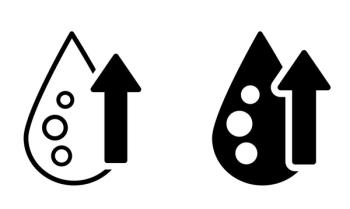
Progressive Heart Damage Seen Two Decades After Adriamycin
GRONINGEN, The Netherlands -- Two decades after they were treated with Adriamycin (doxorubicin) for osteogenic sarcoma or malignant fibrous histiocytoma, the cardiac status of 22 long-term survivors continues to worsen.
GRONINGEN, The Netherlands, July 20 -- The cardiotoxicity of Adriamycin (doxorubicin) does not fade away, even after two decades or more.
A median 22 years (range 15-27.5) after they were treated with Adriamycin for osteogenic sarcoma or malignant fibrous histiocytoma, the cardiac status of 22 long-term survivors continues to worse, according to Dutch researchers.
The longitudinal assessment of cardiac function in the 22 anthracycline-treated survivors found systolic dysfunction in more than a quarter of the patients and diastolic dysfunction in nearly half, Inge Brouwer, M.D., of Groningen University, and colleagues, reported online in the Annals of Oncology. Moreover, cardiac dysfunction was progressive as measured at nine, 14, and 22 years.
Longitudinal studies of cardiac function in long-term childhood-cancer survivors are scarce and frequently are limited to a median follow-up shorter than 13 years, they said.
In the current 2004 study, patients (median age 39) originally treated between 1977 and 1990 were followed for 15 to 27.5 years. Combination chemotherapy included moderate-to-high doses of Adriamycin (225-550 mg/m2; cumulative dose 360 mg/m 2).
Twenty-seven percent of the patients had systolic dysfunction and 45% had diastolic dysfunction. This compared with the 1997 follow-up when 9% had systolic dysfunction and 18% had diastolic dysfunction. Heart-rate variability in 19 available patients showed further deterioration compared with earlier results, the researchers reported.
Although in the earlier analyses of these patients, systolic dysfunction had not progressively decreased in the nine-year and 14-year follow-ups, the number of patients with abnormal systolic function increased significantly in the extended follow-up.
In addition, all six of the patients with decreased systolic function at the current assessment had an elevated wall motion score index. Four had diffuse wall motion abnormalities, and two had regional abnormalities, suggesting ischemic heart disease (confirmed in one by PET scan), the investigators said.
Although some studies have found that younger patients are more at risk for of heart damage, age was not a factor in this study, the researchers said.
Measurement of blood pressure, although elevated in eight patients, did not differ significantly from sex- and age-matched controls recruited from a group of 419 healthy controls, according to the investigators.
There were 31 long-term survivors in the original group treated between 1977 and 1999, with an age range of 10 to 38 years. All had cardiac assessments at nine years (1992), 14 years (1997), and at 22 years in the current assessment. Patients were assessed by blood tests, blood pressure measurement, Doppler echocardiography, ECG, and 24-hour Holter monitoring, among other studies.
Of the original group, one patient died from congestive heart failure; one from a second cancer; two with abnormal heart function were excluded; one had a terminal neurodegenerative disease, and four refused to take part.
No relation was found between cardiac abnormalities and the cumulative dose of Adriamycin, probably because all patients had moderate-to-high doses of the drug, the researchers said.
Among limitations of this study, they wrote, were its small size and the fact that although the patients reported no cardiac symptoms, this was not confirmed by exercise tests.
Finally, the investigators mentioned that the results of the current study may not be completely comparable with those of the earlier assessments. In the current study they used the wall motion score index (WMSI) and tissue velocity imaging (TVI) to determine cardiac function, superior techniques not available in their previous studies.
Dr. Brouwer took care to note that cardiotoxicity from anthracycline treatment is an issue for all cancer survivors, not just for those with bone tumors. However, she emphasized, Adriamycin is a highly effective treatment, and the cure of cancer is still the first priority.
In conclusion, Dr. Brouwer said, "our results suggest that after treatment with anthracyclines, there is an ongoing deterioration of cardiac function and no extinction is anticipated. Therefore, anthracycline-treated survivors are considered for life-long cardiac surveillance."
"We need to keep checking these patients," she said, "and be ready to start medication to stabilize their heart function in order to prevent further cardiac deterioration." In addition to treating risk factors, such as high cholesterol and blood pressure, patients should be encouraged to make helpful lifestyle changes, she added.
Newsletter
Enhance your clinical practice with the Patient Care newsletter, offering the latest evidence-based guidelines, diagnostic insights, and treatment strategies for primary care physicians.




















































































































































































































































































